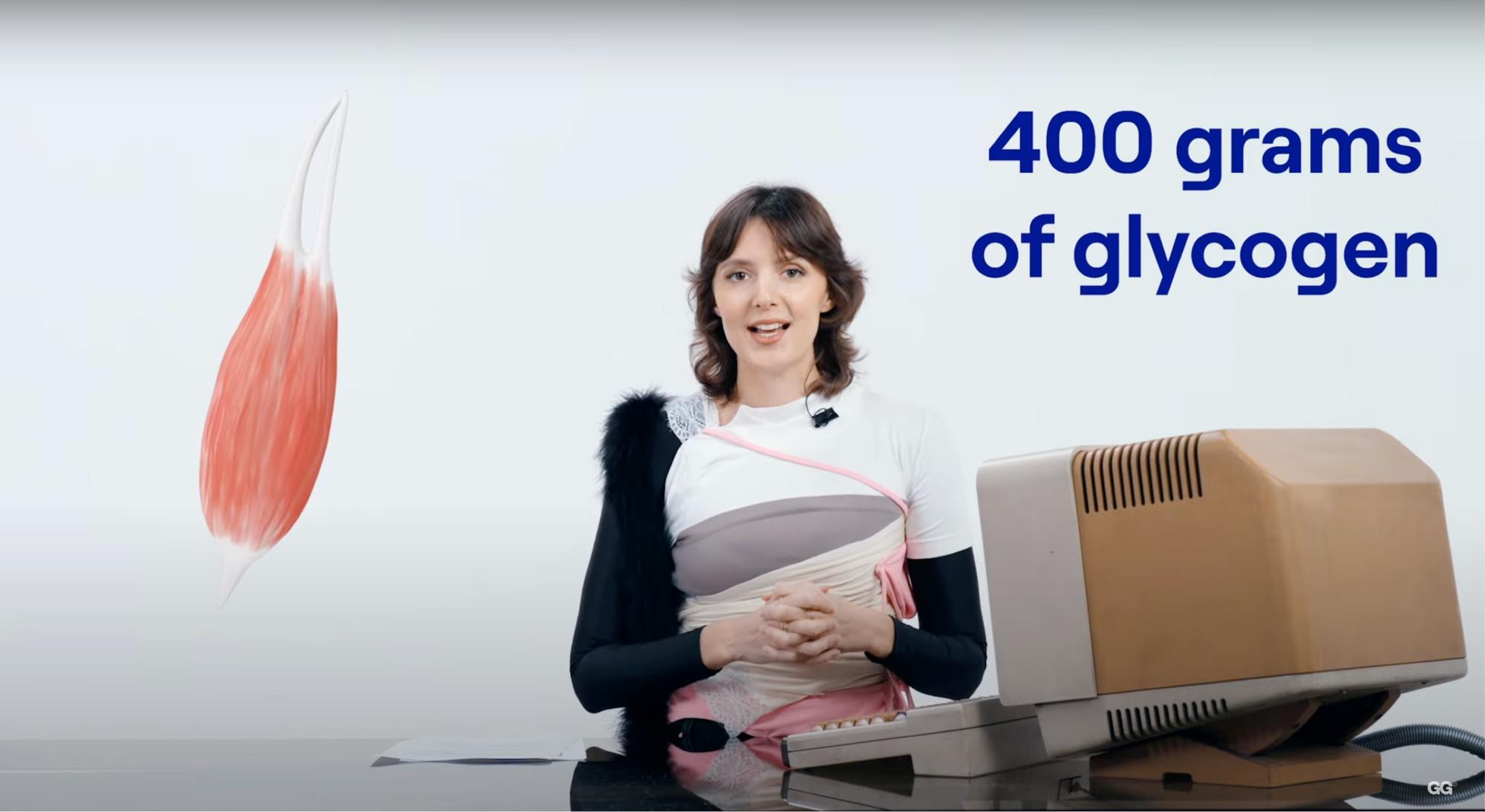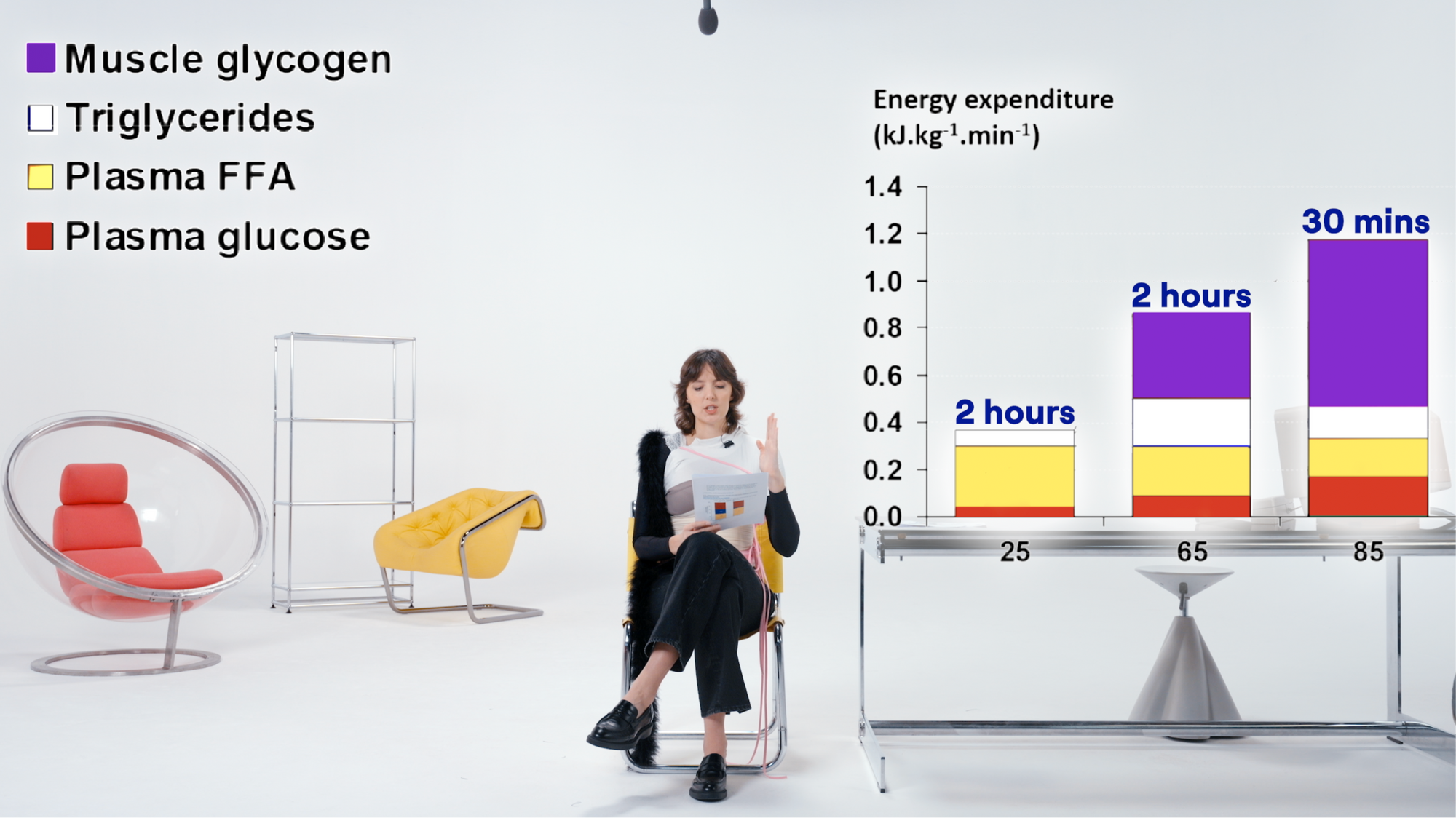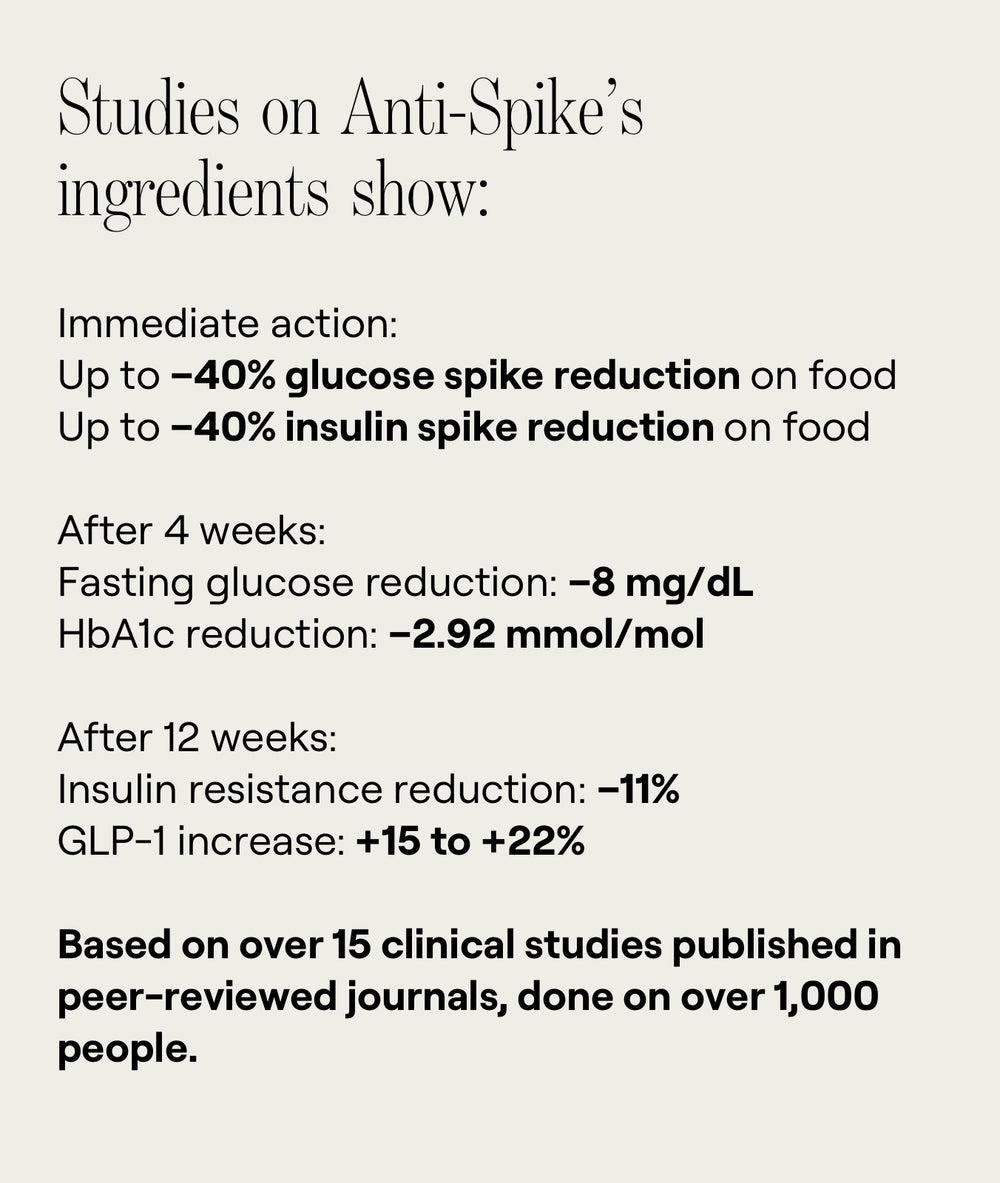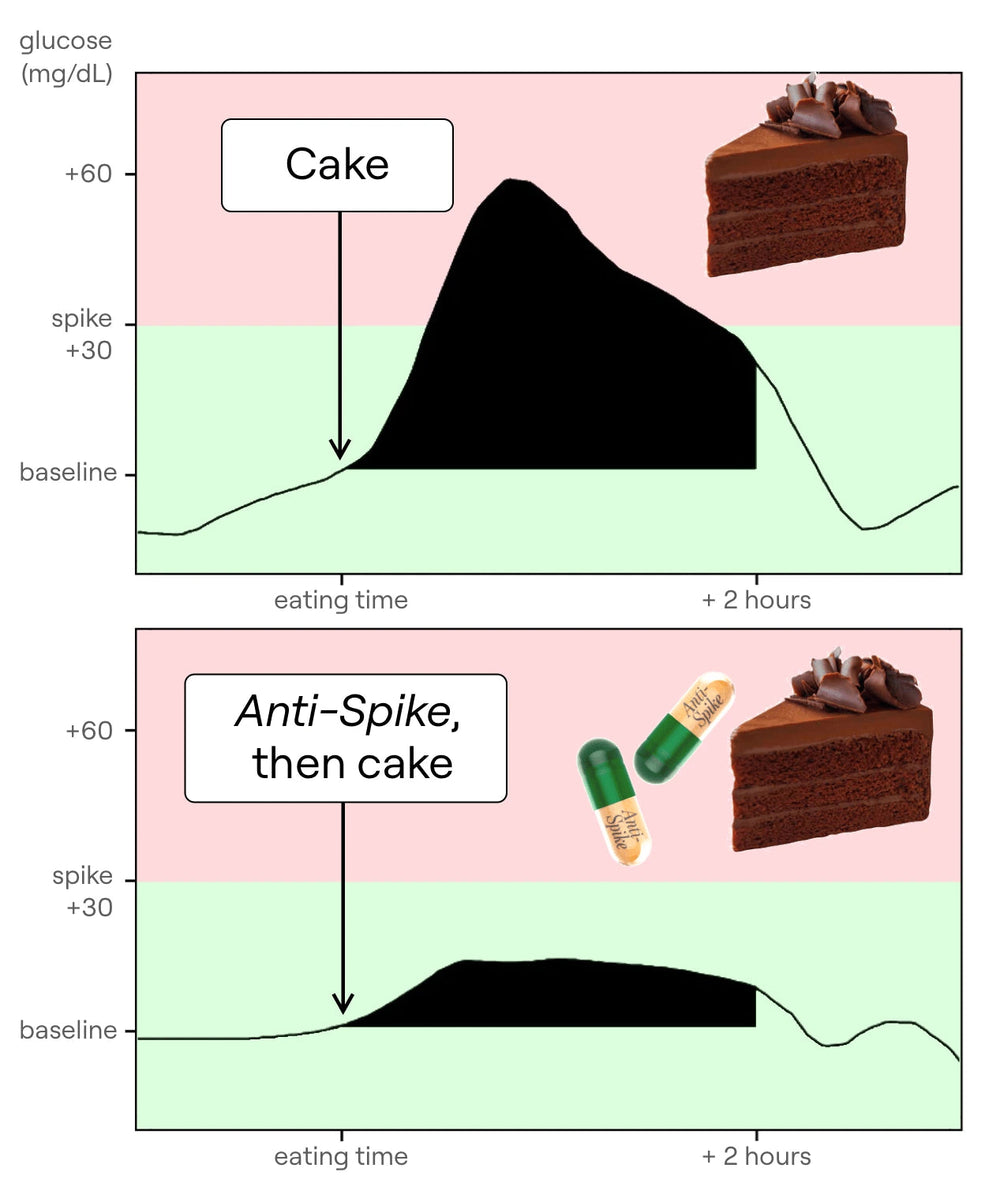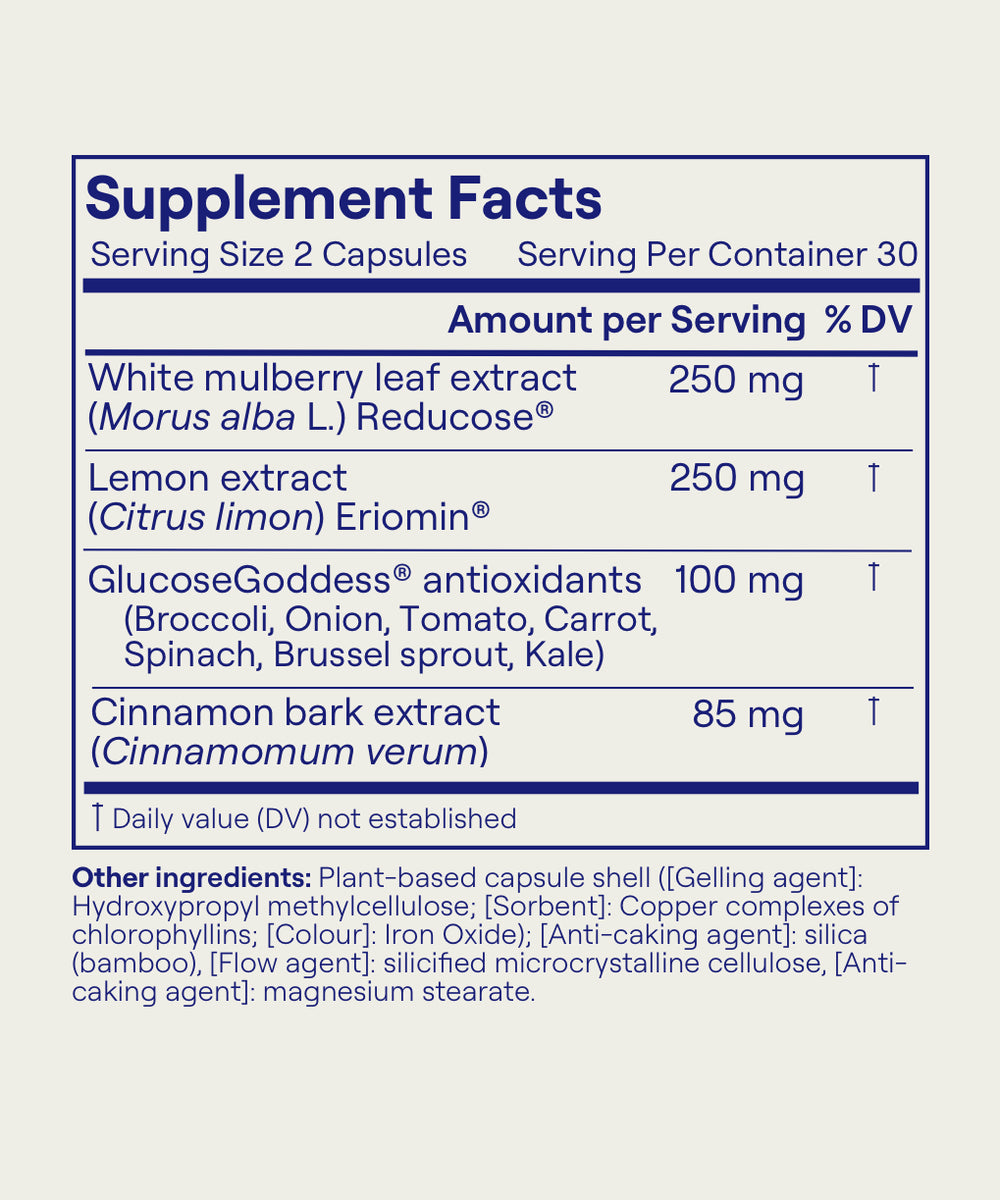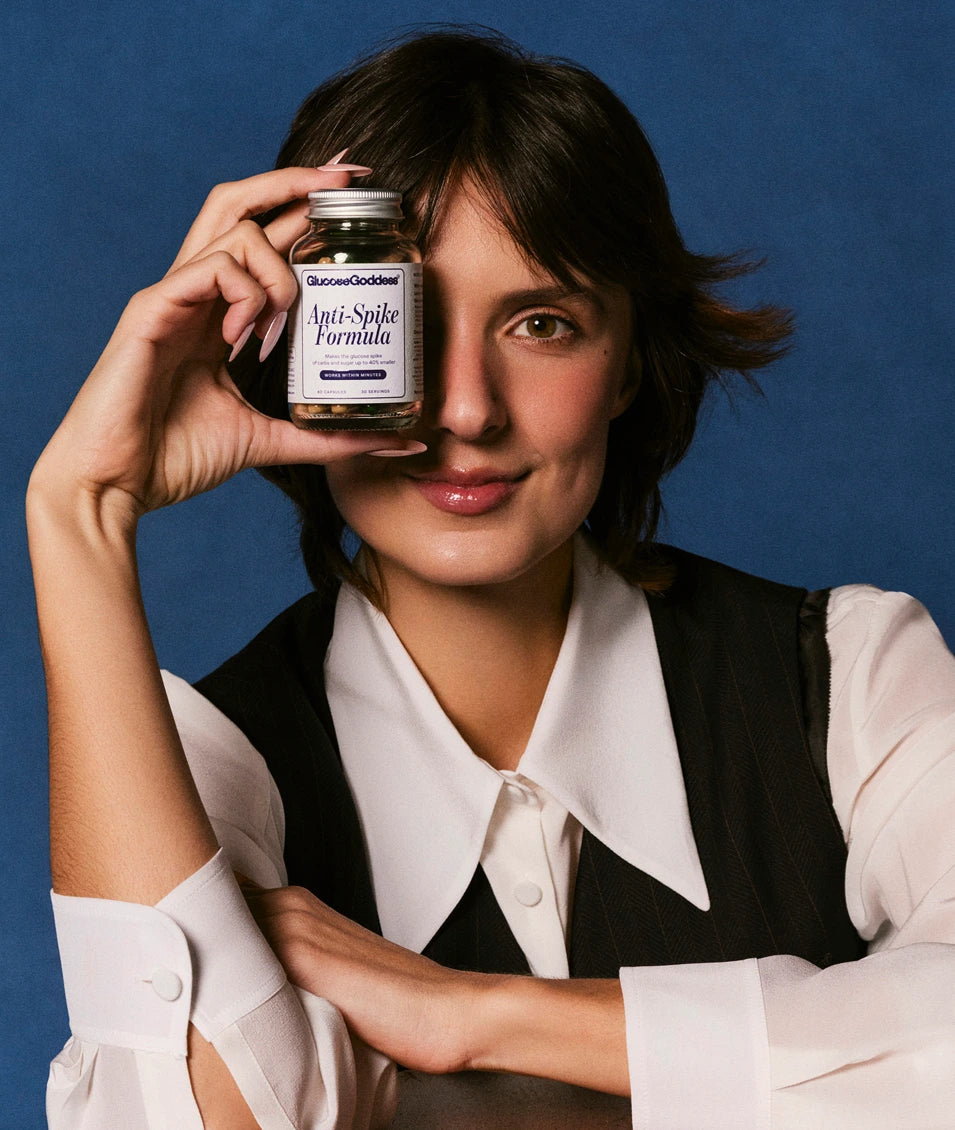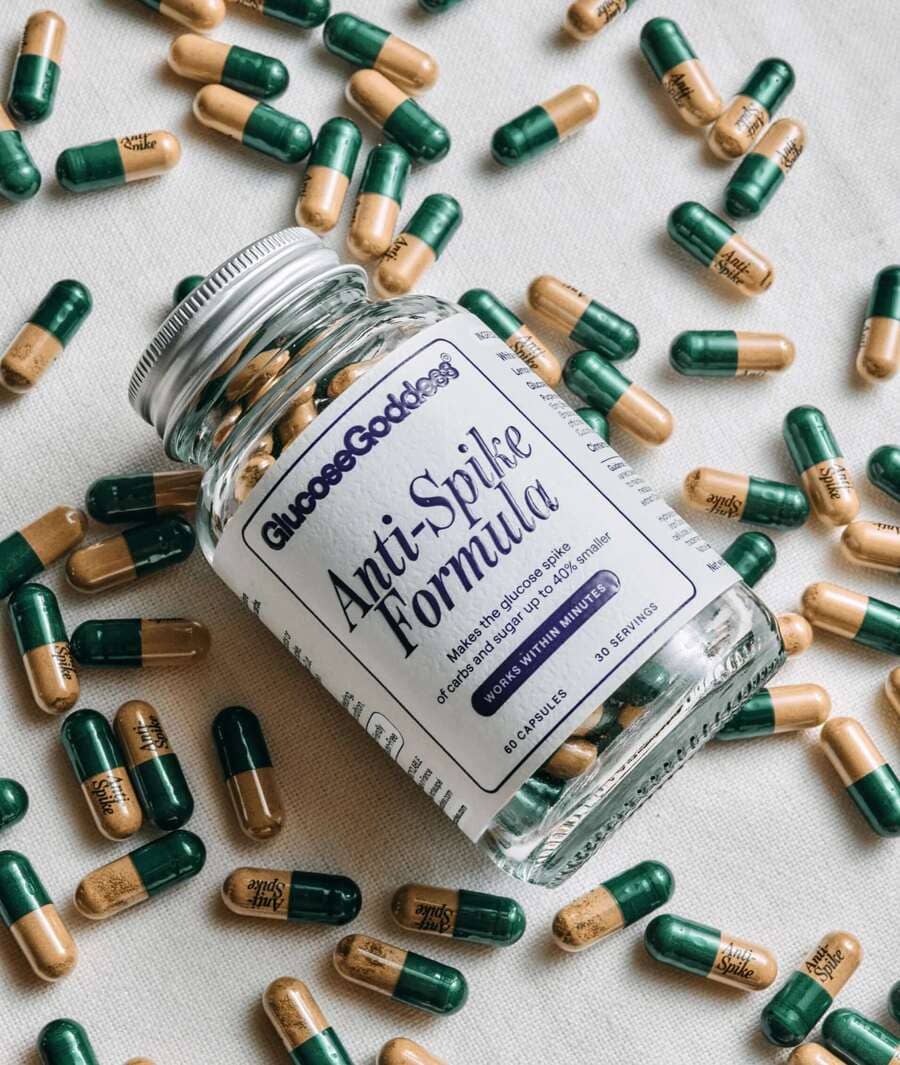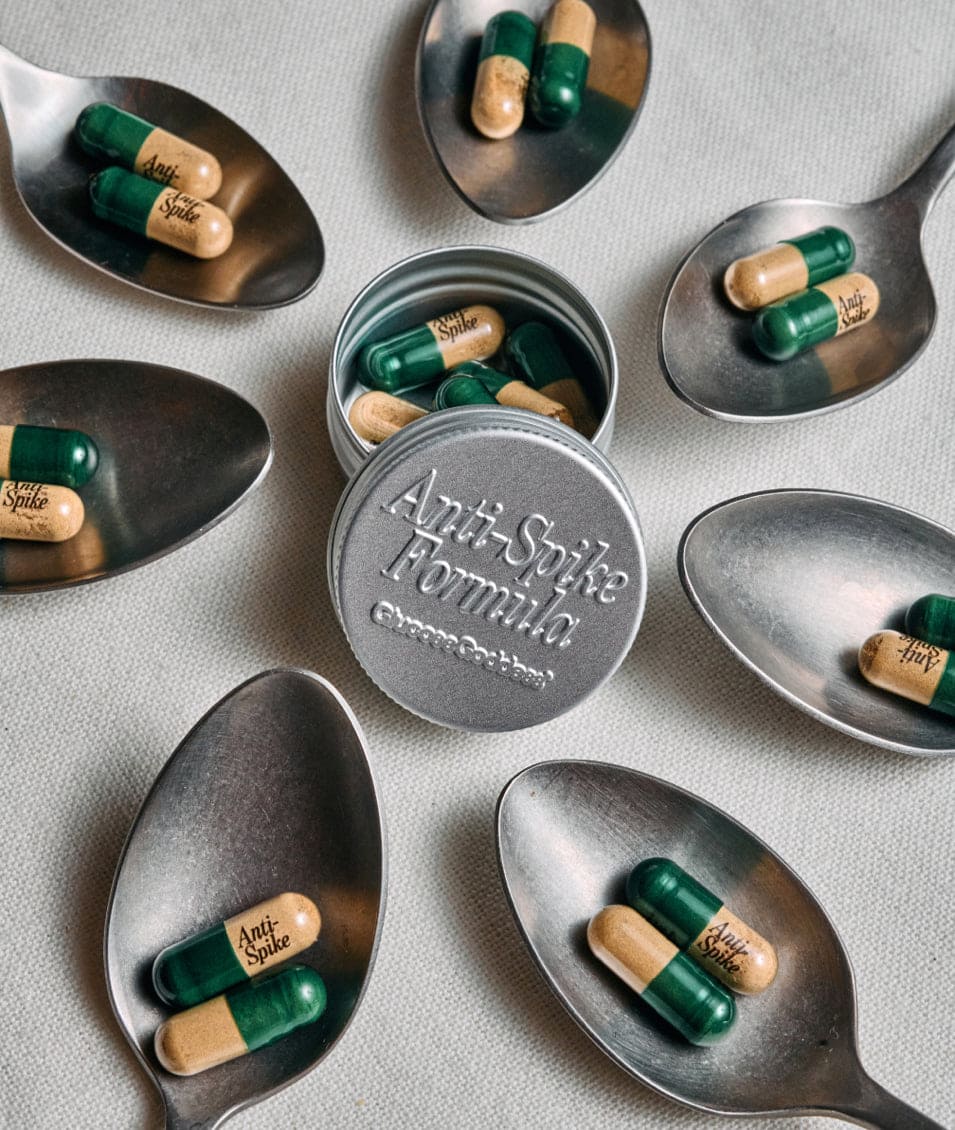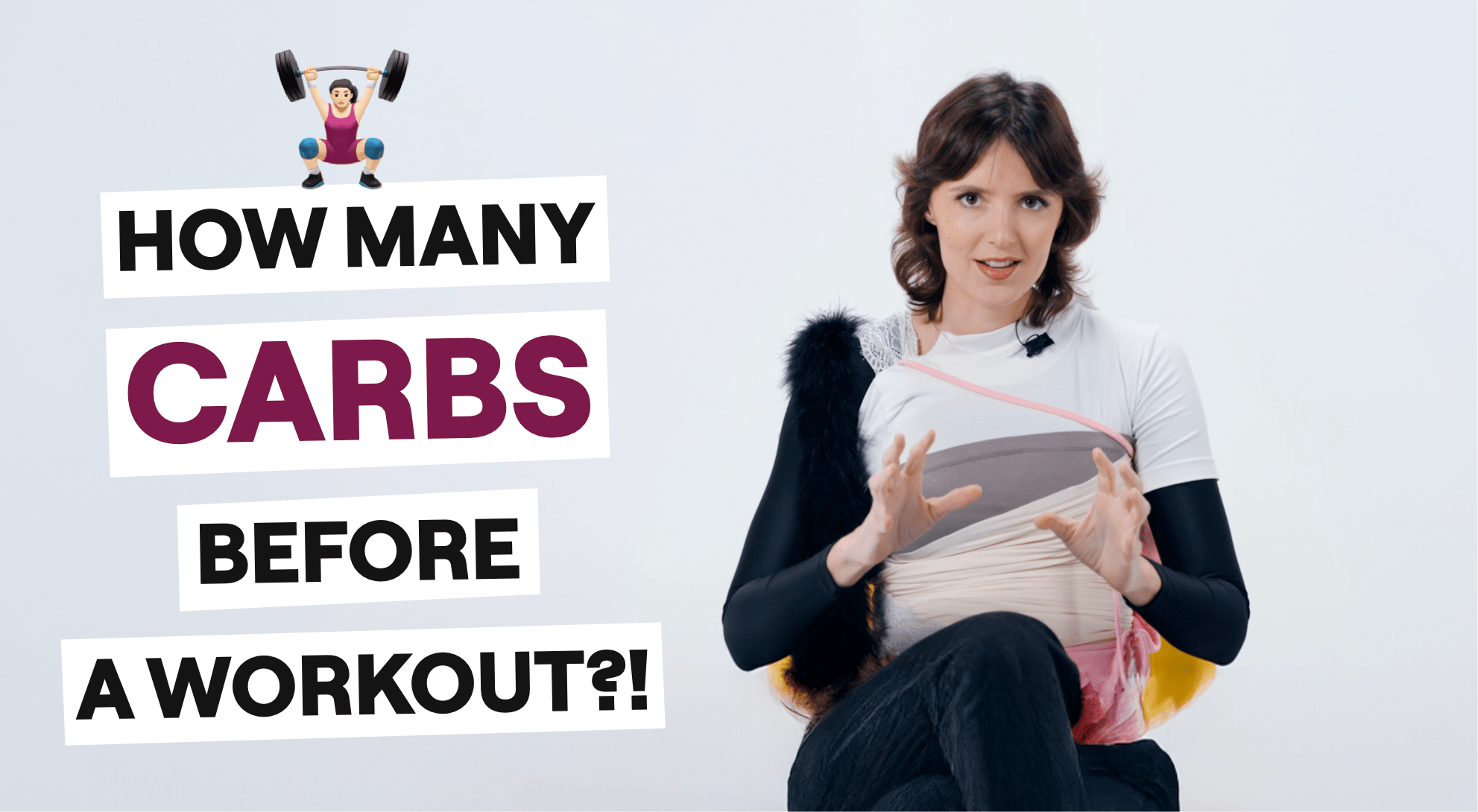SCIENCE EPISODE
What to Eat Before & After Exercise: The Science of Glucose/Fat Burn and Carbs
Hello angels, and welcome back to the Glucose Goddess Show! My name is Jessie Inchauspé. I’m a French biochemist, and I’m excited to teach you how your body works — I’m going to make science fun.
Today we’re going to talk about exercise and food: a very common question I get is how we should eat before we exercise, how we should eat after we exercise, whether it matters what type of exercise we’re doing — endurance cycling, a HIIT class, going for a hike — and how these different exercises inform what you should be eating beforehand to perform well and feel amazing.
What are the top mistakes to avoid in exercise nutrition? Is it better to work out fasted or not? What kinds of exercises burn more fat? So many topics! I’m breaking this into two episodes: this first one is about how to fuel before, during, and after your workout for optimal performance (applies to everybody — endurance athletes or people who go to the gym for 30 minutes), and the second episode, released right after this one, is about protein intake and how to build muscle mass. If you’re interested in the topic, you need both episodes for the full picture.
I’m really excited, and I’m wearing a fun little “Dance the Night Away” top in honor of this exercise-and-nutrition episode. Let’s get started.
Let’s start by talking about carbs: starches like bread, pasta, rice, potatoes, and sugars — anything sweet from apple pie to a chocolate cookie to orange juice. When we eat carbs, something important happens: carbs break down into glucose molecules as we digest them and enter our bloodstream. When there’s a glucose spike — meaning you eat a significant amount of carbs — your body releases insulin. Insulin is a hormone (secreted by the pancreas) that puts excess glucose away; first stop is the liver, an amazing reservoir for excess glucose. The liver turns excess glucose into glycogen — lots of glucose molecules attached together — and can hold about 100 g of glycogen (roughly the glucose in two large fries), about half the amount of glucose your body needs per day to function.
The second storage unit, when the liver is full and there’s still excess glucose, is the muscles: our most amazing storage units because we have so many; muscles can hold about 400 g of glucose as glycogen (about the glucose in seven large fries).
Then, when the liver and muscles are full, any excess glucose is stored in fat cells; the body can grow the number and size of fat cells to store excess energy. Not everybody can put on many fat cells — this has implications for metabolic health — but essentially you have liver, then muscles, then fat cells. When we don’t eat, the body needs energy, so it taps these stores. Whether your body is burning glycogen in muscles and liver or fat in fat cells has a direct impact on exercise performance. Generally — and we’ll get into this — low-intensity efforts burn fat for fuel; explosive or difficult efforts burn glucose, because turning glucose into fuel is faster than turning fat into fuel.
To measure exercise intensity we can use heart rate or VO₂ max. VO₂ max is measured on a treadmill test with a mask and machine (or estimated well by some smartwatches): it reflects how well your body uses oxygen to make energy. The higher your VO₂ max, the harder you can exercise. I’ll show you my exact VO₂ max and test results: I ran from low intensity to very hard while a machine measured not only my VO₂ max but also which fuel I was burning at different intensities. On the graph, white bars = fat burning, green bars = glucose burning; the x-axis is heart rate (191 bpm is my 100% max; the graph starts at 129 bpm — already ~65% of my max — a light jog). As intensity increases, I burn more glucose: at the start it’s a mix; as it gets harder, the white (fat) decreases and glucose dominates. Knowing your VO₂ max matters here; if you don’t, use heart rate. I’ll say things like “40%/60%/85% of max heart rate.” Max heart rate is about 220 minus age (20 → 200 bpm; 40 → 180 bpm, etc.); take a sec to compute yours.
Time for a quick break to tell you about the supplements I developed: Anti-Spike Formula. In my years of research, I’ve understood one key thing: keeping glucose steady is foundational for physical and mental health. If I could take only one supplement to reduce spikes and keep glucose steady, it would be Anti-Spike. I created it with two powerful plant molecules: first, mulberry leaf extract — in a review of 12 randomized clinical trials on over 600 people, scientists found it reduces post-meal glucose spikes by up to 40%, reduces post-meal insulin spikes by up to 40%, and reduces fasting glucose by 8 mg/dL after two months; it reduces glucose absorption and slows how quickly starches turn to glucose, massively reducing meal spikes. Second, a lemon molecule called eriocitrin — it helps the gut produce more GLP-1; clinical trials show GLP-1 production increases after supplementation (healthier glucose levels). I take two capsules every day before my highest-carb/sugar meal. Go to antispike.com to see the science, testimonials, and order.
Back to intensity: VO₂-max % and max-heart-rate % are roughly equivalent — e.g., 60% VO₂ max ≈ 60% max HR. My VO₂ max is 63 ml/kg/min (I’m 32), a result I’m proud of and want to maintain or improve for lifelong fitness. What happens during exercise? Exercise = using muscles for movement; muscles have two fuel types (fat and glucose) from different sources. Inside muscle: purple = glycogen; white = intramuscular fat — both can be used. From outside muscle (bloodstream): red = blood glucose (from liver release or current carb intake), yellow = fat from fat stores. This matters because if you eat carbs during exercise, glucose appears in the bloodstream within minutes and can be used by muscles.
Let’s look at exercise types. First type: “chill” exercise — ~50–55% of max VO₂/HR (hiking with a friend, easy riverside cycling, conversational pace). You can sustain this for minutes or hours; it’s not uncomfortable. Studies show you rely mostly on fat and blood glucose. Example: the study “Intramuscular triacylglycerol, glycogen, and [acetyl-group] metabolism during 4 hours of moderate exercise in man.” Participants cycled at ~55% max HR for 4 hours; in the first two hours, fuel was fat from blood, muscle glycogen, and blood glucose; in the last two hours, fat use massively took over (fat released from fat cells). Up to ~60% of fuel at low intensity can be fat — amazing, because we have a lot of fat reserves. Every pound of body fat could power ~12 hours of walking at this intensity. Yes, the liver still releases some glucose, but if you relied only on glucose, you’d run out in a few hours; fat use allows long efforts.
Practical upshot: for long walks/hikes/moderate exercise, you don’t need snacks for performance; your fat reserves suffice (snacks are for enjoyment, not necessity). If your goal is fat-burning, working at this intensity burns more fat for fuel than higher-intensity efforts (which have other benefits but burn proportionally more glucose).
Common question: should you work out fasted? At this moderate intensity, fasted is fine: blood glucose might dip a bit as muscles use it, but you’re mostly burning fat. If you’re female, note that long fasted exercise can be somewhat stressful; do what feels right — you don’t have to train fasted. Important topic: metabolic flexibility. Some people cannot burn fat for fuel even at low intensities; they burn only glucose — that’s poor metabolic flexibility. Signs: constant hunger, constant snacking, an hour’s walk feels exhausting.
How to train flexibility? Reduce glucose spikes so your body stops depending on big sugar waves; my hacks are a great place to start (see the free PDF with 10 glucose hacks in the episode description).
One hack: move after eating. If you are going to eat a cookie, the best moment is before a walk/hike so muscles use that glucose; e.g., pastry on its own = big spike; pastry + 10 minutes of seated calf raises (great at soaking up glucose) = smaller spike. Donut on its own vs. donut then vacuuming: muscles pull glucose from blood, reducing the spike.
Now, 85% of VO₂ max / max HR: difficult exercise. Examples: sprinting or fast 5K/10K; HIIT bootcamps; vigorous cycling (hills/intervals); race-pace swimming; high-power rowing; CrossFit/circuit-style classes. A 2020 study, “Regulation of fat metabolism during exercise,” compared cycling at 25% VO₂ max (2h), 65% (2h), and 85% (30 min). White = intramuscular fat; yellow = blood-borne fat; purple = muscle glycogen; red = blood glucose. At low intensity, cyclists mostly relied on fat. At 65%, things shift. At 85%, muscles mostly burn glucose: lots of muscle glycogen and more blood glucose. Big problem: at 85% your body relies on glycogen and blood glucose, but that runs out. Total glycogen stores are ~500 g (liver + muscle). At 85%, you burn ~150 g glycogen per hour. Blood sugar starts dropping; your body reduces output — you can’t push as hard. After ~3 hours, reserves are gone (and performance declines before that as a curve). Therefore, at high intensity your body needs glucose in the bloodstream and from glycogen stores.
What should you eat during prolonged high-intensity exercise? Since the 1980s we’ve known that eating during prolonged high-intensity efforts helps. You need carbs (they become glucose).
Old recommendations: 30–60 g carbs/hour — too generic. Key question: how many carbs can you absorb and then burn per hour? The gut can absorb ~60 g glucose/hour; at 85% you might burn 120–180 g/h, so 60 g intake isn’t enough. But scientists discovered you can also absorb ~30 g/h of fructose in addition to glucose; the liver converts fructose to glucose to fuel you. So a glucose+fructose combo can deliver ~90–100 g/h usable carbohydrate. Papers like “A step towards personalized sports nutrition: carbohydrate intake during exercise” show that dual transport (glucose + fructose) increases exogenous carbohydrate oxidation and power output (like in cyclists) and reduces time to completion. Formats are personal preference (drinks/gels/solids); if using solids, drink water. Target a glucose:fructose mix to approach ~100 g available per hour. Important: if you’re not doing very long intense efforts (e.g., 4-hour rides), you don’t need all that — and outside exercise, high fructose is detrimental. Pre-event fueling: make sure glycogen is full the day before (rice/pasta/bread/potatoes — not cookies/ice cream), and the morning of (top up overnight depletion). Don’t do very long, intense events fasted if you care about performance. During intense efforts under ~2 hours (e.g., HIIT class), you generally don’t need to eat during the session if glycogen is full. For short bursts, a neat trick: a carbohydrate mouth rinse.
Study: “Carbohydrate mouth rinse and spray improve prolonged exercise performance in recreationally trained male college students,” and a meta-analysis on mouth rinse effects: mouth rinsing a sweet solution (glucose/juice) for 5–10 seconds without necessarily swallowing can increase performance by ~3–7% in sub-2-hour intense efforts (the brain gets a “fuel incoming” signal). You can swallow it if you like; the key is the swish. For 2–3 hours of intense exercise, start refueling in that window (now swallow the carbs: gels/drinks) to provide exogenous carbohydrate as internal glycogen drops. Beyond 3 hours you risk “hitting the wall” — a sudden inability to maintain pace/output due to low fuel — unless you consistently fuel with carbs (ideally glucose+fructose).
Post-exercise: how to replenish glycogen? Unless you need rapid turnaround (like a marathon then another event an hour later), you don’t need lots of fructose or sugary junk. Replenish with good-for-you carbs using my glucose hacks (veggies first, protein next, then starch) so glucose arrives more slowly; after exercise you’re insulin-sensitive, so starches efficiently refill glycogen — you don’t need 35 cookies (which would cause a big spike and crash, inflammation, and fatigue). A normal meal works: veggie starter (see free PDF with simple recipes), protein, then plenty of starch.
Adapting my hacks if you’re an athlete: make breakfast include starch and fruit when you need glycogen topped up (in my savory breakfast framework, starch/fruit are optional for most, but not if you’re doing four hours at 10 a.m.).
Apart from upping starch post-exercise to refuel, the same hacks apply — reducing spikes helps everyone. For athletes, just ensure sufficient starch and, for example, fruit to keep glycogen reserves robust.
I hope this was useful. I’ll see you in the next episode on protein intake: before and after intense exercise, how to eat enough protein to maintain and build muscle mass — key not just for performance but also longevity, feeling amazing, and healthy aging.
 Anti-Spike Supplement
Anti-Spike Supplement
 The Recipe Club
The Recipe Club
 Course
Course
 50 Breakfast Recipes
50 Breakfast Recipes
 50 Veggie Starter Recipes
50 Veggie Starter Recipes
 20 Vegan Recipes
20 Vegan Recipes
 20 Gluten-Free Recipes
20 Gluten-Free Recipes
 The 10 Glucose Hacks
The 10 Glucose Hacks
 Vinegar
Vinegar
 Alcohol
Alcohol
 Fasting
Fasting
 GLP-1
GLP-1
 What to Eat Before & After Exercise
What to Eat Before & After Exercise
 Protein
Protein
 PCOS
PCOS
 Menopause
Menopause
 My MRI Story
My MRI Story
 Breakfast
Breakfast
 Supplements
Supplements
 Clothes on Carbs
Clothes on Carbs
 Eggs & Cholesterol
Eggs & Cholesterol
 Chocolate
Chocolate
 Food Labels
Food Labels
 Veggie Starters
Veggie Starters
 Move After Eating
Move After Eating
 Why Glucose Matters
Why Glucose Matters
 Glucose Revolution Book
Glucose Revolution Book
 The Glucose Goddess Method Book
The Glucose Goddess Method Book

